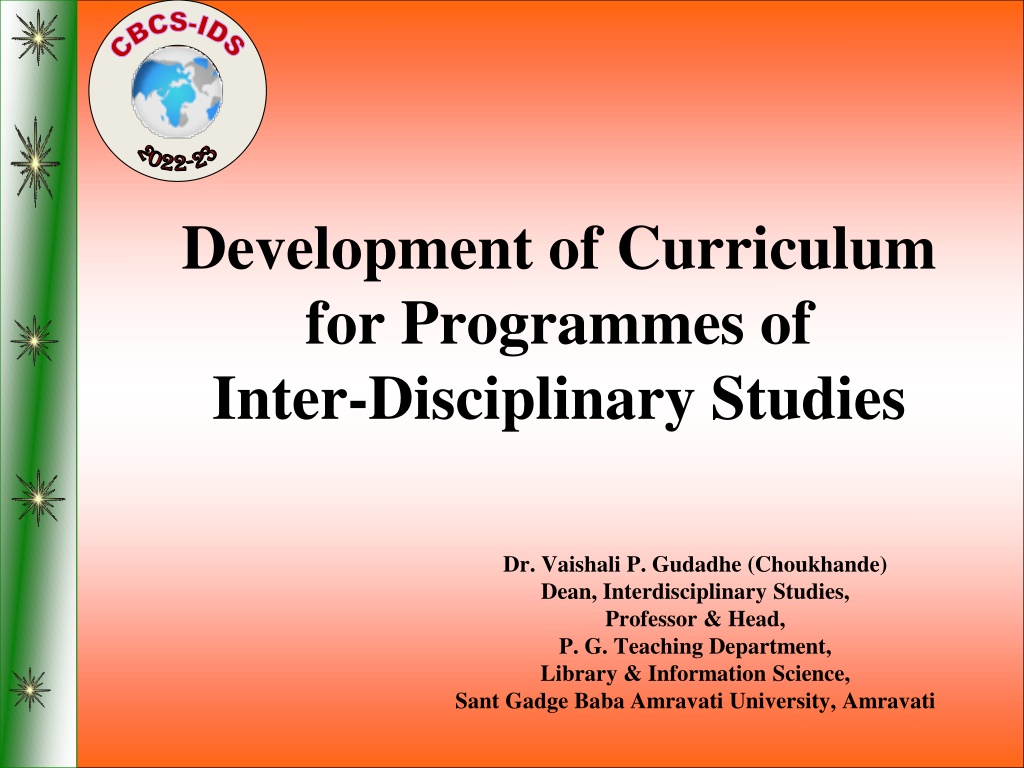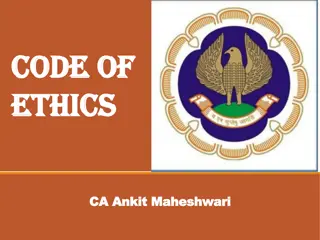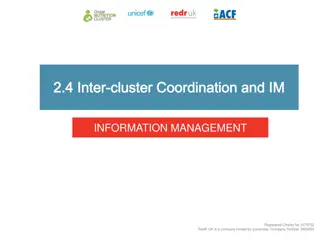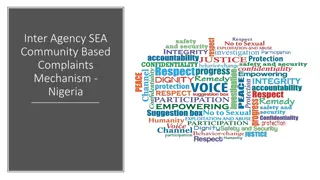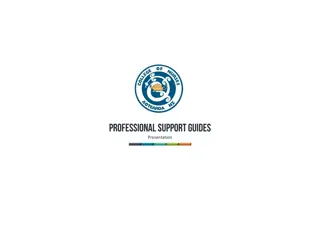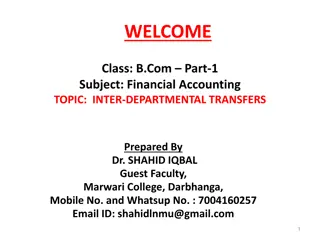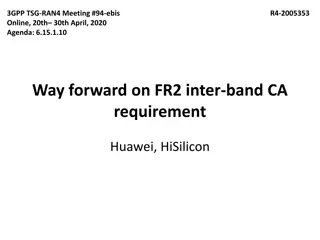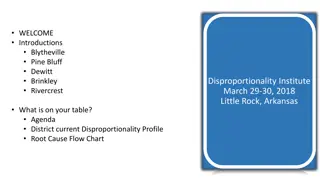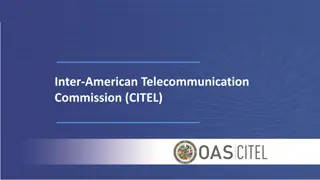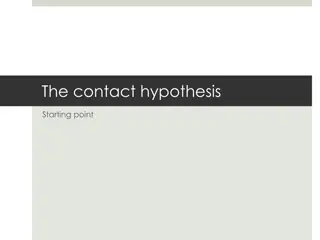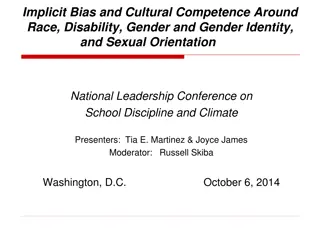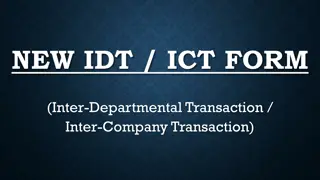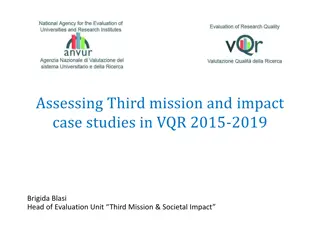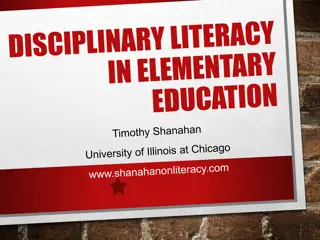Inter-Disciplinary Studies
Texas property tax exemptions including Homestead Exemption, Over 65 Exemption, General Residence Homestead, and more. Learn about qualifying criteria and how exemptions can reduce taxable property value.
Download Presentation

Please find below an Image/Link to download the presentation.
The content on the website is provided AS IS for your information and personal use only. It may not be sold, licensed, or shared on other websites without obtaining consent from the author.If you encounter any issues during the download, it is possible that the publisher has removed the file from their server.
You are allowed to download the files provided on this website for personal or commercial use, subject to the condition that they are used lawfully. All files are the property of their respective owners.
The content on the website is provided AS IS for your information and personal use only. It may not be sold, licensed, or shared on other websites without obtaining consent from the author.
E N D
Presentation Transcript
CBCS-IDS Click to read this material 2022-23 Development of Curriculum for Programmes of Inter-Disciplinary Studies Dr. Vaishali P. Gudadhe (Choukhande) Dean, Interdisciplinary Studies, Professor & Head, P. G. Teaching Department, Library & Information Science, Sant Gadge Baba Amravati University, Amravati
Credit Based Semester System Choice Based Credit System
Interdisciplinary Studies -UG & PG Programmes SN BOS/Adhoc Committees -10 Programmes (25) 1) 2) Performing Arts (Ad-hoc) BPA MPA Drama/Theatre, Dance (Kathak) 1 1) 2) 1) 2) 3) 1) 2) Education (BOS) B.Ed. M.Ed. 2 Physical Education (BOS) B.P.Ed. M.P.Ed. B.P.E.S. 3 Home Science (BOS) 1) M.Sc (Food Science and Nutrition) 2) M.Sc (Human Development) 3) M.Sc (Textile and Clothing) 4) M.Sc (Extension and Communication) 4) M.Sc (Resource Management) B.Sc. Home Science M.Sc. Home Science (with five subjects of specialisation) Bachelor of Fashion Designing 4 3) B.Sc. Animation (Ad-hoc) 1) BSc. Animation 1) BSW/B.A in Social work 2) MSW/B.A in Social work 1) B.A. Yogashastra 2) M. A. Yogashastra 1) B.A. (J.M.C.) 2) M.A. (J.M.C.) 5 Social Work (BOS) 6 Yogashashtra (Ad-hoc) 7 Journalism & Mass Communication (Ad-hoc) 8 Gender and Women Studies (Ad-hoc) M.A. Gender and Women Studies 9 Library & Information Science 1) BLISC 2) MLISC 10
Curriculum development What sort of Library professionals/social workers/Animated film makers/ Art performers/ Nutritionist/Journalist/ Sportsman/teachers etc. do we want? How will we reflect demands from external agencies? What outcomes and content should we include? What teaching and learning methods should we use? How will we assess learners? How should we establish links to evaluation?
Learning outcomes should: Be written in the future tense Identify important learning requirements Use language which students can understand Be achievable Be assessable
Learning outcomes Acceptable verbs: To describe To compare To analyse To plan To critically appraise Unacceptable verbs: To know To understand To appreciate To enjoy To believe
SOCIAL WORK- IDS Program Objectives: The Social Work Program provides students with the knowledge, values, and skills necessary for culturally sensitive generalist social work practice. The BSW curriculum is designed to prepare students to provide services that advances the well-being of people; promote social and economic justice; and enhance the social functioning of individuals, families, groups, organizations, and communities. It is our desire to provide students with both academic and field based experiences that allow the student to integrate theoretical and applied knowledge in order to engage in the planned change process at the micro, mezzo, and macro levels of practice. Student Learning Outcomes: Student Learning outcomes ,Specifically, the bachelor of social work program seeks to: Demonstrate Ethical and Professional Behavior Engage Diversity and Difference in Practice Advance Human Rights and Social, Economic, and Environmental Justice Engage In Practice-informed Research and Research-informed Practice Engage in Policy Practice Engage with Individuals, Families, Groups, Organizations, and Communities Assess Individuals, Families, Groups, Organizations, and Communities Intervene with Individuals, Families, Groups, Organizations, and Communities Evaluate Practice with Individuals, Families, Groups, Organizations, and Communities
BSC ANIMATION- Course Outcomes Graphics Art ,Students will able to: Have a proficiency in a broad range of design skills pertaining to publication design Have a basic understanding of typography, color, layout, tables, images, graphics, styles and interactive elements. Be able to navigate Adobe Workspace, Set up a document, and work with pages. Understand how to work with frames, importing & linking graphics Be able to import and edit text, work with typography and style sheets Efficiently use color, transparencies, and tables Have an understanding of output, exporting and packaging. Be able to create a print-ready document. Have the ability to create a well-designed layout, brochure or other design materials for print or web. Production Process- Students will able to: Video Post-production is a linear process of film making. Video Post-production include Picture editing, Sound effects editing, Music composition, Visual effects, Sound mixing and Color correction. There are three processes of film making: Video Pre-production, Video Production and Video Post-production. Video Post-production is the last stage of film making process. Video Post-production process is started when shooting ends. Video Post-production Process follows the Video production phases.
Format and Templates for Courses (Theory/Practical) of UG/PG Programmes Preparation of Curriculum Preparation of PO- Program Objectives PSOs- Program Specific Outcomes CO-Course Outcomes/Internal Assessment Preparation of Skill Components (UG Level) Discipline Core Courses Discipline Elective Courses
Useful Resources 1) ugc.ac.in 2) Naac.gov.in 3) inflibnet.ac.in 4) E-pg-Pathshala 5) oer.org 6) Blooms Taxonomy :: Resource for Educators https://bloomstaxonomy.net
